

The biggest causes of skylight issues are neglect and small detailing errors that snowball over time. Use these seven, field-tested tips to keep things tight, bright and compliant.
Look closely at perimeter sealant, EPDM gaskets, and the step/soaker flashings. UV and thermal movement can open micro-gaps you won’t see from the floor. If you spot hairline cracking or lifting edges, re-seal before wind-driven rain exploits the weakness. This single habit prevents the majority of water-ingress callbacks.
Flat rooflights sit on a kerb or upstand; pitched units rely on their flashing kits. Either way, debris builds up. Clear moss, leaves and grit so water flows around the unit, not under it. On flat roofs, verify the upstand is still proud of the waterproof layer (typically 100 mm minimum finished height) so ponding can’t reach the glass edge.
A quarterly rinse with a soft brush, pH-neutral cleaner and plenty of water avoids mineral spotting that “bakes on” in summer. For awkward locations, use telescopic poles with microfiber pads or hire a pro who uses purified (de-ionised) water. Avoid harsh abrasives and never pressure-wash seals.
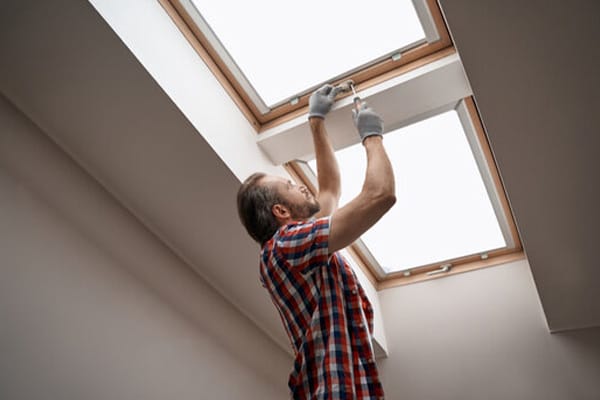
Bathrooms, kitchens and tightly sealed lofts push indoor RH up. When warm, moist air hits a cold glass edge, it condenses often blamed on “leaks.” Pair trickle ventilation or mechanical extract with Skylight Maintenance practices: run the fan a few minutes longer, use humidity-sensing controls, and consider laminated inner panes which run warmer at the edges.
If you have motorised rooflights, run them monthly. Check that rain sensors trigger closure, that remotes still have battery, and that insect screens and blinds move freely. A quick wipe of rails and a dry silicone-safe lubricant on friction points keeps mechanisms smooth.
Powder-coated aluminium frames stay pristine with gentle cleaning; avoid solvents that dull the coat. Where skylights meet timber reveals, keep paint or varnish sealed to prevent moisture ingress. On green roofs, keep planting 50–100 mm off the frame to maintain airflow and stop roots creeping toward seals.
Most warranties expect reasonable care. Create a simple log (date, action, observations, photos). If you ever need a claim, that log is gold—proof you followed Skylight Maintenance Tips and didn’t allow preventable damage.
A light, regular rhythm is better than crisis repairs. Here’s a year-round checklist that matches UK weather patterns.
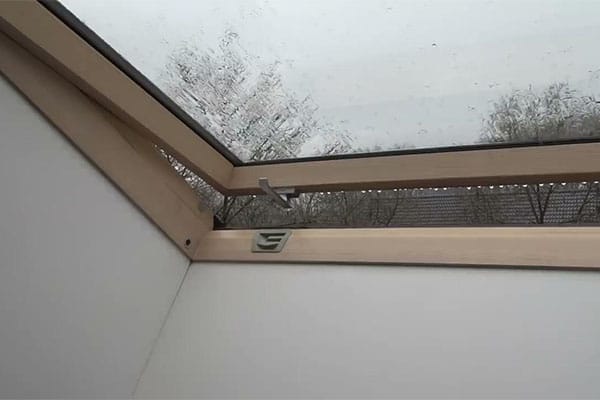
Spring (post-storm recovery)
Summer (UV and heat management)
Autumn (pre-rain prep)
Winter (water tightness & condensation)
if you’re planning to buy or replace a skylight, which brand is the most reliable choice? Find out here:
Best Skylight Brands in the UK: A 2025 Comparison
Perimeter water ingress is the classic complaint and it usually traces back to one of three root causes:
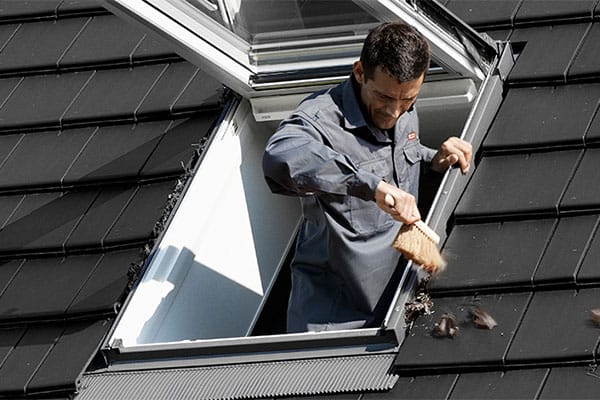
Compromised flashing or upstand
On pitched roofs, the wrong flashing kit for the tile/slate profile, or improper laps, lets water creep in. On flat roofs, a low or poorly detailed upstand lets standing water reach the glass edge. Result: drips and stained plasterboard.
Sealant fatigue and substrate movement
Buildings move; sealant ages. A small split at a mitre, a pinhole where two beads meet, or a brittle patch behind trim lets wind-driven rain track inside.
Condensation misdiagnosed as a leak
Bathrooms and tight lofts often show droplets and streaks after showers or on frosty mornings. If the moisture appears uniformly along the bottom edge or on reveals, it’s likely condensation. The cure is ventilation, insulation continuity, and warm-edge spacers not more mastic.
Other common issues:
The good news: 80–90% of “leaks” vanish with correct flashing, sound upstands, and a renewed weather seal. The rest are almost always resolvable with a new IGU or hardware refresh.
Skylights are durable, but not immortal. Use this decision tree to save money and disruption.
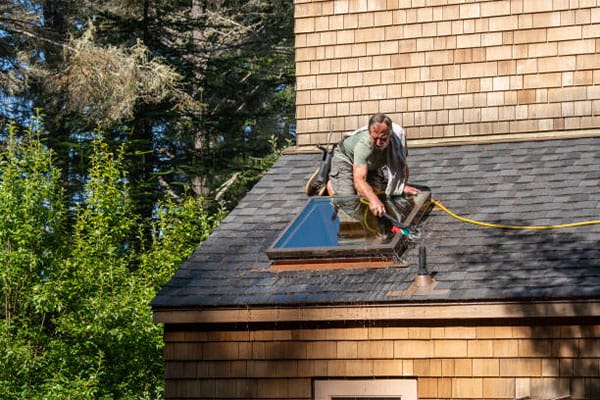
Repair makes sense when
Plan a replacement when
Service life guide: Quality units routinely last 20-30 years; hardware and seals may need attention sooner in coastal or exposed sites. Keep your maintenance log and warranty docs together to guide that decision.
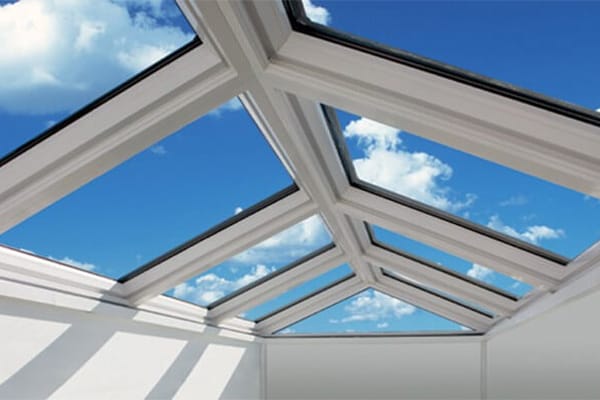
Safety first: if you cannot reach it securely from inside (e.g., a centre-pivot pitched window that flips for cleaning), use a professional. Falls from height aren’t worth the risk.
DIY approach (safe access only):
What not to do:
If access is awkward (three-storey lightwells, steep roofs), a pro using water-fed poles and DI water will deliver a better finish with less risk and often for less cost than scaffolding.
Great skylights don’t just look good; they stay good with the right habits. A simple routine of inspection, cleaning, drainage checks, and humidity control prevents leaks, protects warranties, and keeps interiors brighter and more comfortable. For designers and homeowners alike, these Skylight Maintenance Tips are the difference between a showpiece and a recurring snag list.
Looking to specify or considering a repair plan?
At SM Glasstech, we design, install, and service skylights across the UK — from compact loft windows to large flat rooflights and walk-on glass solutions. Simply share your photos or a quick sketch, and our team will provide you with a practical, build-ready plan.
Prefer to speak directly? Call 07572 020020 or email us your details, and we’ll recommend the most reliable and straightforward next step.


Send us your contact details and a specialist will get in touch with you.